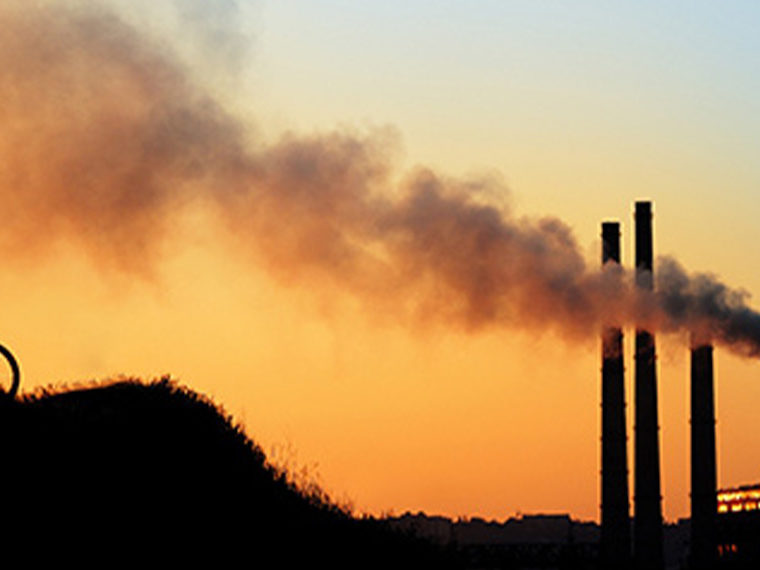How a localized flood may result in fewer loans to a far-off community
Over the past 40 years, the U.S. banking system has consolidated dramatically, with four giants — JPMorgan Chase, Bank of America, Wells Fargo and Citi — operating virtually coast to coast. Gone are the once rigid laws that kept bank operations within a single state’s borders.
The four big national franchises — and a handful of regional giants — are convenient for their customers. But the spread of interstate banking on such a vast scale has also created a new network of economic interdependencies between the markets these banks operate in, for better or worse.
These relationships are lesser studied, given they’re relatively new, but they appear to be highly significant to both local and national economic performance. UCLA Anderson’s Shohini Kundu and University of Chicago’s Seongjin Park and Nishant Vats, examining this vast and relatively new financial nervous system, find that it unintentionally spreads the fallout from natural disasters from a bank’s primary deposit-taking markets to others, as the bank then curtails lending.
Multimarket banks economically connect distant areas by using deposits in one area to fund loans in others. If the bank’s deposits are concentrated in the area of a natural disaster, then a sudden sharp reduction in deposits from that area may cause financial shocks to cities far away.
The working paper suggests this phenomenon accounts for 3.30% of the variation in economic growth across markets. This puts it on the same level as oil shocks, monetary policy surprises and other major surprises in the economy.
Kundu and Vats earlier documented how the interstate banking system helps economic growth by shifting lending capacity from one market, where a major industry may be struggling, to others.
Where the Money Comes From
Kundu, Park and Vats found that deposits at multimarket banks tend to be concentrated in certain geographic areas; roughly 30% of banks’ deposits tend to come from a single county in their area of coverage. This appears to hold true for even the largest U.S. banks. The counties making up the large portion of a bank’s deposits differed by banks, and these counties were spread across the country as can be seen in the map below.
The researchers used natural disasters as a trigger for large and sudden changes to bank deposits, using data from the Spatial Hazard Events and Losses Database for the United States. SHELDUS has county-level information on natural disasters: dates, counties impacted and losses (property, crop, injuries and fatalities). The map below shows the magnitude and areas where property damage occurred over the period of the data they collected.
The researchers collected branch-level bank deposit data from the Federal Deposit Insurance Corp. Lending data was represented by small business loans and mortgage originations. Along with macroeconomic data, these data sets were all combined and covered 1994 to 2018.
Domino Effect: Fewer Deposits, Fewer Loans
The data shows that natural disasters cause a decline in bank deposits in areas where the disaster occurred. Households in these areas are forced to withdraw from their savings as they rebuild. As a result, natural disaster can continue to cause a negative impact to bank deposits for up to 10 years.
The researchers used county-level property damage per capita as their measurement of the disaster and called it a “disaster shock.” A bank’s exposure to a natural disaster was found by weighting the county-level disaster shock by the fraction of the bank’s deposits from that county.
A sudden reduction in deposits appears to reduce a bank’s lending across all geographic areas. The reduction in lending was exacerbated if the bank was already lending near its capital constraints. The reduced loan availability is felt most by smaller firms and in banks’ tertiary markets.
Looking at banks’ collective exposure to disaster shocks, the authors created a model showing the relationship of these shocks to GDP growth. Overall, a $1 reduction in deposits was found to be associated with a reduction of $1.18 in commercial and industrial lending. Large banks with assets of more than $35 billion were especially important in transmitting the slowdown in lending to the economy. The researchers suggest that large banks reduce lending growth by 4.18 percentage points following a deposit shock versus the estimate of a 1.87 percentage points reduction across all banks.
Kundu, Park and Vats also suggest that for every 1 percentage point decrease in loan supply GDP growth falls by 0.14 percentage points.
The researchers’ work lends support to the SEC’s current consideration of requiring publicly traded companies to disclose information on their climate change risks and opportunities. As climate change is linked to an increase in the frequency of natural disasters, this research suggests it may cause more volatility in economic growth in the future.
Featured Faculty
-
Shohini Kundu
Assistant Professor of Finance
- Seongjin Park
About the Research
Kundu, S., Park, S., & Vats, N. (2021). The Geography of Bank Deposits and the Origins of Aggregate Fluctuations. http://dx.doi.org/10.2139/ssrn.3883605






